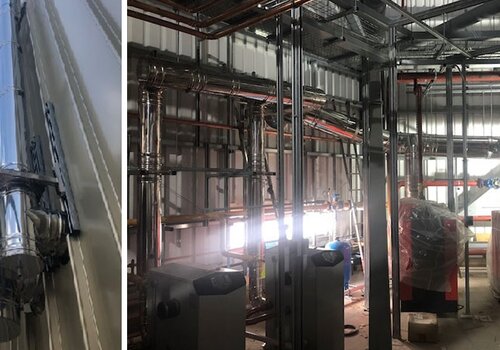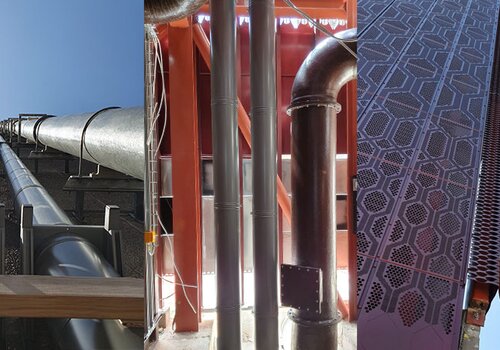Correct specification
Flues perform a simple task in data centres. They are pieces of pipework or duct that expel gases and hot air from a generator’s combustion chamber to the open air outside. But this simplicity underplays their critical role when things go awry.
If the chimneys fail, there’s a high chance the on- site power will overheat or malfunction. This leaves servers without power in the event of a mains cut, which is often prohibitively expensive.
Research has shown the cost incurred by major data centre outages continues to rise, with some estimates placing the figure at £4,500 per minute. However, this is based on data from 2019, so the number has likely risen further in the intervening years.
But it’s not just during operation that chimneys need to be considered.They also have a direct impact on the progression of a new build.
Failure to specify the correct product at the right time will usually lead to delays, either during construction itself or when commissioning is taking place. Delays are common on most construction sites, though they are particularly troublesome for data centre projects – to such a degree, in fact, that the Uptime Institute recommends some businesses write penalty clauses into contracts before work begins.
These can be substantial when compared with the original awarded contract.
The cost of outages continues to rise, with some estimates placing the figure at £4,500 per minute.
There are also retention clauses to consider, which typically range between 10% and 20% of the contract’s total value.These are included for claims made against installed products. While standard practice, any questions around product quality and suitability will typically result in payments being withheld or charges applied.
“It’s not uncommon for disputes to take a large percentage of a contractor’s profit margin, so it’s essential to choose a reliable, well-designed flue system installed by an expert subcontractor. This will lower the chances of losses that are ultimately avoidable.”
Beyond this, there are also reputations on the line. Mistakes could have repercussions that last long after any remedial work has taken place. Operators will be less inclined to employ a business again if the product originally specified is incorrect and in need of a refit.
This creates added hassle and expense that is avoidable when the appropriate solution is chosen first time. Poorly designed flues can also pose a safety hazard to staff and the general public if they are unable to expel exhaust fumes properly – this issue is particularly important for builds close to built-up areas.


